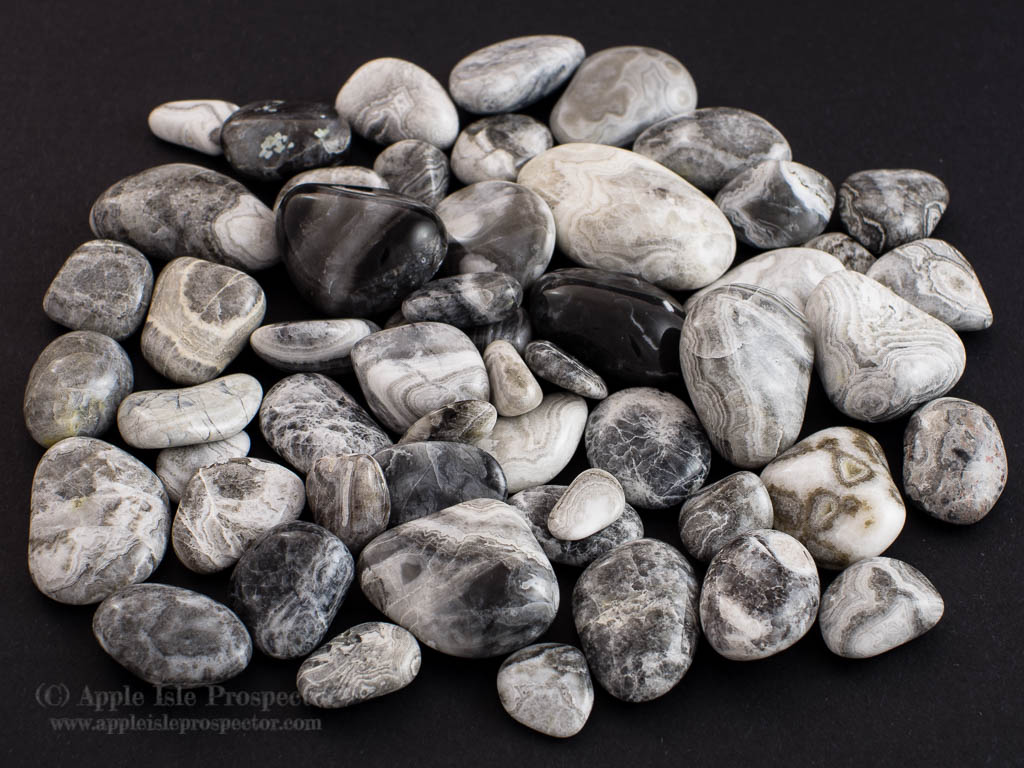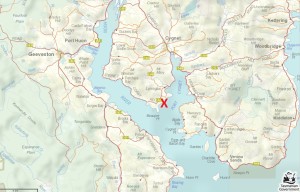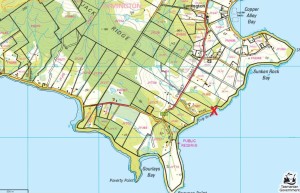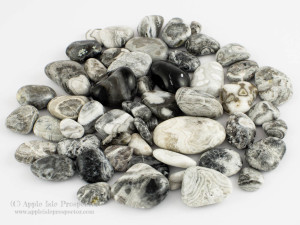Drip Beach, near Lymington, in southern Tasmania, is a classic location for grey lace agate, and a great place to spend a morning or afternoon fossicking. The agate can be found as rounded pebbles up to several centimetres long. The small beach at the end of Drip Beach Road is the best place to go. Both the cove to the east of the boat ramp, and the longer beach to the west both produce good material. There is an abandoned gravel quarry and other exposures of gravel near the junction of the Cygnet Coast Road and Drip Beach Road, in private property, that seem to show that the deposit is possibly an old, fossil terrace of the Huon River. Similar deposits apparently exist in higher reaches of the Huon River, around Blakes Opening (now inside the National Park), and the tertiary gravels in Calder, NW Tasmania, contain similar (better quality) lace agate.
Do you need a licence to fossick at Drip Beach?
Since Drip Beach is not a designated Fossicking Area, according to the advice of Mineral Resources Tasmania, you will need a prospecting licence to fossick there. Although maps highlight the area as a foreshore reserve, the area is unambiguously shown as available for mining by the ‘Unavailable Areas’ overlay in both MRTmap and LISTmap, and none of the multiple versions of the rules of prospecting that are currently published indicate that you’re not allowed to prospect in that reserve type.
- Location of Drip Beach. Map courtesy of LISTmap
- Drip Beach showing foreshore reserve and block boundaries. Map courtesy of LISTmap
Best times to look
The best time to go looking, in my opinion, is after a good southerly in late summer or early autumn. The beach builds up with sand during the summer, and those southerlies erode a lot of the sand away, exposing the pebbles. We’ve had best success looking in the gravel banks above high tide, as well as along the beach looking at pebbles that have recently been uncovered by the tides and storms moving the sand around. Below low tide there is a good accumulation of small-sized material, some of which also has good patterns.
While a few of the stones are large enough to prepare as specimens, they’re usually only the size of pebbles, approximately 2–8 cm long. They are very easy and rewarding to tumble, although some have deeper holes that won’t polish. We’ve had good success with a week each at grit sizes #80, #220, #600 and tin oxide polish.
- Drip Beach agates, before polishing
- Polished Drip Beach agates
Is there something in particular you’d like me to write about? If you like the content at Apple Isle Prospector, feel free to get in contact, or leave a comment.






Cheers, visited the site and found some nice specimens thanks to your blog
Great!